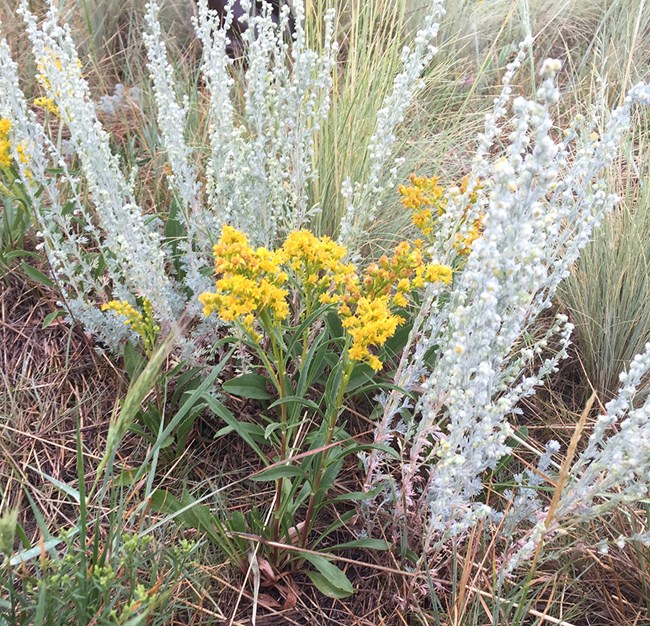Last updated: April 20, 2024
Article
Checking Florissant's Vital Signs

NPS photo
Rocky Mountain Network Science in the Monument
National parks are the guardians of our unique American natural and cultural history. But perhaps more than ever before, parks exist in a rapidly changing landscape. Urban growth, replacement of native species by exotics, air and water pollution, increasing visitor use, and climate change all impact the natural web of life. This leads us to ask:
How healthy are our parks?
How are they changing?
To answer these questions, the National Park Service clustered parks into 32 Inventory and Monitoring Networks. In 2007 at Florissant Fossil Beds and nearby park units, a small team of scientists representing the Rocky Mountain Network began monitoring natural resources, called “vital signs,” that serve as red flags if conditions deteriorate. We support park managers’ efforts to make science-based management decisions.
What Do We Monitor at Florissant Fossil Beds National Monument?
Wetland Ecological Integrity

NPS photos
Florissant’s wetlands are biodiversity hotspots. They harbor rare plants, like moss gentian (Gentiana fremontii), marsh felwort (Lomatogonium rotatum) and northern sweetgrass (Anthoxanthum hirtum). They also sustain migratory birds, amphibians that need water to reproduce, and hungry elk, among many other species. Florissant has a variety of wetlands, including grassy wet meadows and peat-rich fens. These fens are groundwater systems that have likely been in the valley accumulating peat for centuries. Florissant’s wetlands, however, have been impacted by roads and impoundments that affect water flow. Rapid climate change and invasive exotic plants are also threats. We monitor three “sentinel” wetland complexes in Florissant to learn how these biologically rich ecosystems function and respond to stresses.
Some wetland characteristics we measure:
- The different native plant species and forms (sedges, forbs, shrubs)
- Presence/absence of invasive exotic plants
- Fluctuation in groundwater levels over time
- Human and natural disturbances, like distance to roads and elk browsing intensity

Michael Charters/Calflora.net
Learn more and find recent publications:
Wetland ecological integrity monitoring in Rocky Mountain Network parks
Upland Vegetation and Soils

NPS photo
Montane meadows, woodlands, and forests are important landscape features at Florissant. Plants in these communities anchor the food web, stabilize the soil, and shelter wildlife. These plants, in turn, are influenced by the underlying soil. Changes to vegetation and soils, like those caused by cheatgrass (Bromus tectorum), an exotic invasive plant, can ripple through entire ecosystems. Cheatgrass can increase erosion and change fire patterns. Past farming and livestock grazing activities at Florissant, including stock ponds, have altered the landscape and opened the door to exotic plants. Other disturbances, like changing climate and land use, have ongoing impacts. We monitor the monument’s upland meadows, woodlands, and forests to learn how they function and respond to stresses.

NPS photo
Some upland characteristics we measure:
- The different native plant species and forms (sedges, forbs, shrubs, trees)
-
Presence/absence of invasive exotic plants
-
Tree and seedling density, damage from pests or disease, and proportion of living trees
- Potential for soil erosion (stickiness of soil particles, soil texture, bare ground cover)
-
Soil chemistry, like pH, carbon, nitrogen, minerals, and the amount of organic matter
- Human and natural disturbances, like livestock grazing, distance to roads or trails, and fire
Learn more and find recent publications:
Upland vegetation and soils monitoring at Rocky Mountain Network parks
More Information and Vital Sign Publications
Download a printable pdf of this article.
Prepared by Sonya Daw and the Rocky Mountain Network staff.
